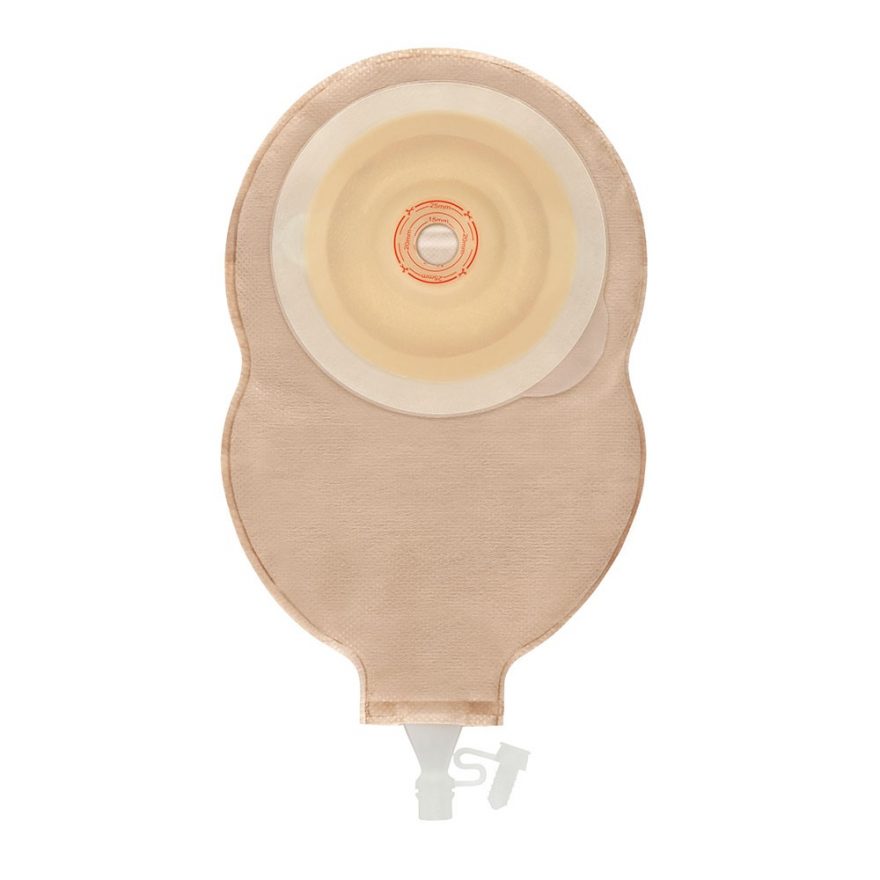Stoma necrosis is a serious, yet uncommon complication of having a stoma. It occurs when the blood supply to/ from the stoma is impaired or interrupted, resulting in partial or complete stoma tissue death. As blood flow and tissue perfusion are essential for stoma health, deficient blood flow to the stoma will lead to necrosis.
When does necrosis happen?
Stoma necrosis is an early complication following surgery. It usually happens in the first 24hours following stoma surgery, but can also occur anytime up to 5 days post operatively and can also be a complication of a hernia, prolapse or trauma
It can be associated with emergency surgeries and more often with a colostomy than an ileostomy or urostomy. Stoma necrosis is linked to surgical complications during stoma construction such as;
the stoma being brought up under tension due to abdominal swelling, obesity or sutures around the stoma which are narrowly spaced or tight. It can also result from the interruption of blood flow, causing a clot or because of abdominal structure anomalies such as a thick abdominal wall, as a result of oedema (swelling), distention (enlarged) or obesity. It can also be as a result of post-operative complications such as severe blood loss or low blood pressure.
Types of stoma necrosis
Stoma necrosis is categorised as partial/superficial or complete/deep necrosis. Partial/superficial necrosis appears to be more common than complete/deep necrosis. The level of necrosis is dependant how much blood supply the stoma is receiving during and after the surgery.
Your Colorectal surgeon may notice during, or straight after surgery, if the stoma appears partially necrosed (ischaemic) and will investigate how much tissue damage there is. This can be done by examining the stoma mucosa with direct light to check the colour changes of the mucosa and either the use of a proctoscope, or the insertion of a thin, lubricated glass tube and shining the light on the mucosa, almost like a mini-endoscopy, whilst you are still asleep. Stoma necrosis may be instantly revised during surgery, if deemed urgent.
The surgeon may leave any partial/superficial necrosis, as it may not benefit from revision (further surgery). However, it will be closely monitored, by both the surgeon and the hospital Stoma Care Nurse, to check progress and prevent any deterioration to the stoma, which may cause further complications in the future.
Often, complete/deep necrosis does not become evident until several days following surgery. If you have been discharged home by this time, contact your Community Stoma Care Nurse immediately.
What does stoma necrosis look like?
The stoma can appear dark in colour, varying from maroon to black. As the tissues deteriorate further they can appear grey in colour. It is often soft and flaccid and can feel cool or cold to the touch.
What can be done?
If the stoma is partially necrosed, it can often recover on its own. The superficial necrotic mucosa can often “slough off “as the stoma is cleaned, revealing pink healthy tissue beneath. It is often useful to wear a clear pouch during this time, so you and your nurses can monitor your stoma regularly without disturbing both stoma and skin. Your stoma nurse may provide you with a powder to apply regularly, which will encourage the dead tissue to slough away, revealing the healthy tissue beneath. A two-piece appliance will allow more frequent application of powder to speed up the process. Keeping the stoma warm and staying active can help increase blood flow.
For more extensive necrosis, for example if the ischaemic damage is more than 2cm in depth, the necrosis may require surgical excision. Again, you will be encouraged to use a clear pouch and the ward nurses will ensure the template fits well and is not too tight around the stoma, which could cause further trauma.
Stoma necrosis might sound alarming but noticing the symptoms early can lead to it being resolved.
If left, it can lead to further complications such as a short-spouted stoma, a retracted stoma (stoma sitting flush or below skin level), dehiscence (skin breakdown around the border of the stoma) and even stoma stenosis (narrowing or constriction of the stoma), which then in turn can lead to leaks and skin irritation. Please read out previous blogs on these topics for more information.
All of the issues mentioned, can be treated with the right appliance and close monitoring, to help deal with them. Speak with your Stoma Care Nurse for advice.


